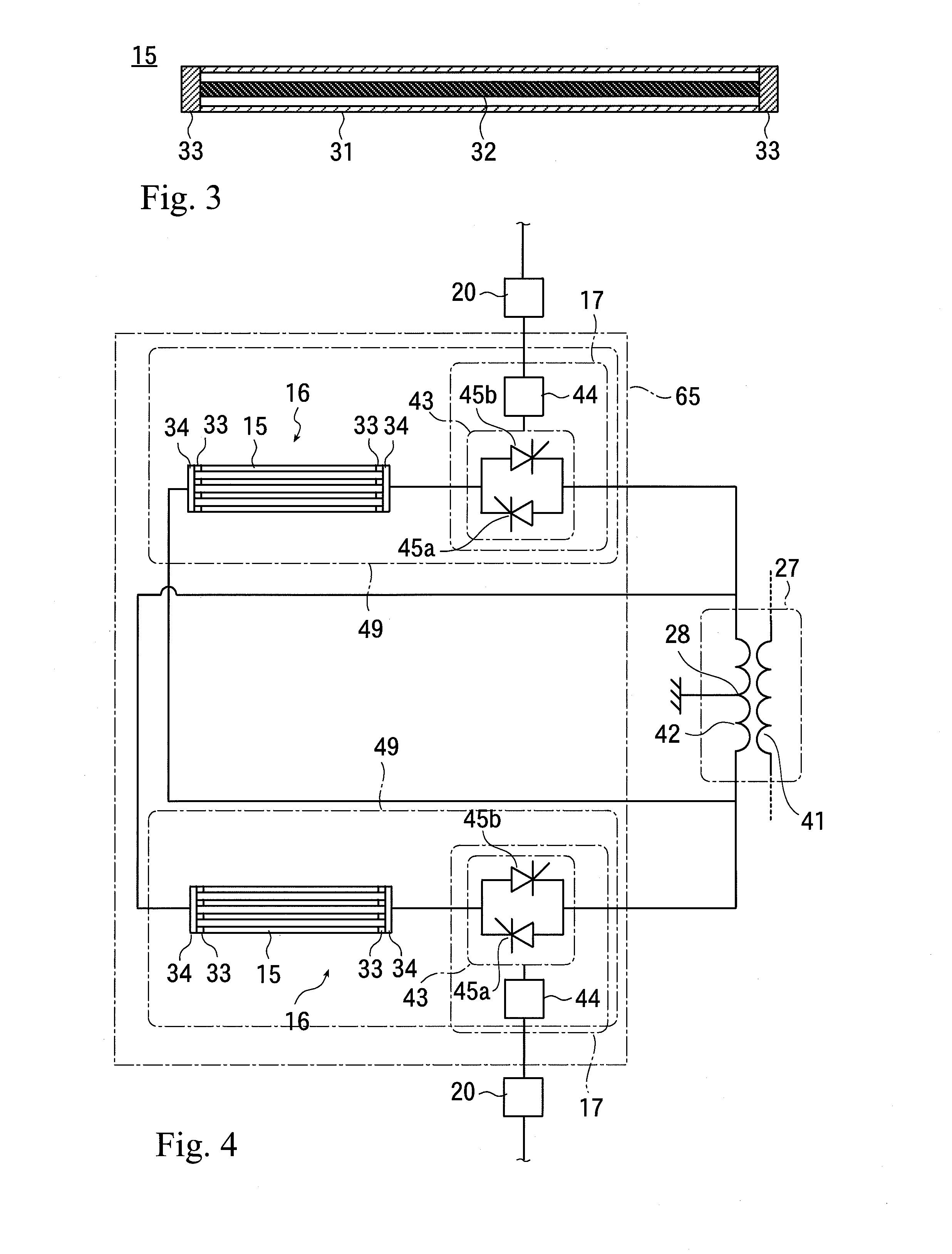Vacuum heating device and vacuum heat treatment method
a vacuum heating device and heat treatment technology, applied in the field of vacuum heat treatment method, can solve problems such as service efficiency degradation, and achieve the effect of low resistan
- Summary
- Abstract
- Description
- Claims
- Application Information
AI Technical Summary
Benefits of technology
Problems solved by technology
Method used
Image
Examples
Embodiment Construction
[0053]Reference numeral 1 of FIG. 1 generally shows a film forming apparatus, which has a carry-in unit 11, a heating unit 12, a processing unit 13, and a carry-out unit 14.
[0054]The units 11 to 14 have vacuum chambers 151 to 154, to which vacuum exhaust systems 121 to 124 are connected, respectively, so that each unit can be separately vacuum evacuated.
[0055]In the film forming apparatus 1, object to be processed (such as, semiconductor substrates or liquid crystal glass substrates or the like) is heated in a vacuum ambience in the vacuum chamber 152 of the heating unit 12, and then, a thin film is formed on the surface of the object to be processed in the vacuum chamber 153 of the processing unit 13.
[0056]Such a vacuum heat treatment method is hereinafter described. First, the vacuum chamber 152 of the heating unit 12 and the vacuum chamber 153 of the processing unit 13 are previously vacuum evacuated. Then, after an object to be processed is carried into the vacuum chamber 151 of...
PUM
 Login to View More
Login to View More Abstract
Description
Claims
Application Information
 Login to View More
Login to View More - R&D
- Intellectual Property
- Life Sciences
- Materials
- Tech Scout
- Unparalleled Data Quality
- Higher Quality Content
- 60% Fewer Hallucinations
Browse by: Latest US Patents, China's latest patents, Technical Efficacy Thesaurus, Application Domain, Technology Topic, Popular Technical Reports.
© 2025 PatSnap. All rights reserved.Legal|Privacy policy|Modern Slavery Act Transparency Statement|Sitemap|About US| Contact US: help@patsnap.com



